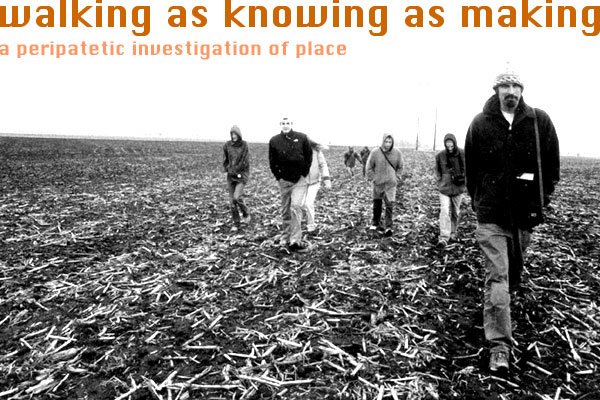... A PROTRACTED SYMPOSIUM ...
WALKING AS KNOWING AS MAKING // A PERIPATETIC INVESTIGATION OF PLACE
SPRING 2005 // UNIVERSITY OF ILLINOIS @ URBANA-CHAMPAIGN
HOME & INTRODUCTION
// SCHEDULE & PARTICIPANTS // BIBLIOGRAPHY
& LINKS
WKM READING GROUP
// ONLINE EXCHANGE // OTHER WALKERS
... an inexhaustive list of other walkers & thinkers
& writers ...
Paul Adams / Joseph Amato / Keith Basso / Wendell Berry / Steve Brill / Bill Brown / Susan Buck-Morss
Janet Cardiff / Francesco Careri / Edward Casey / Rosalyn Deutsche / Barbara Kirshenblatt-Gimblett
Jay Griffiths / Dolores Hayden / William Least Heat-Moon / Linda Hogan / Basia Irland / Kelly Kindscher
Satish Kumar / Miwon Kwon / Donna Landry / Lucy Lippard / Stephanie Mills / John Hanson Mitchell
Gary Paul Nabhan / Richard Nelson / Deborah Parsons / Scott Russell Sanders
Rebecca Solnit / Charlene Spretnak / John Stilgoe / Yi-Fu Tuan
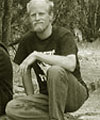 PAUL
ADAMS (PhD) has held teaching positions at Virginia Polytechnic
Institute and State University, University of Albany, SUNY, and Texas
A&M University. His research addresses topics in all areas of communications
and geography, including popular culture, globalization, the geographical
implications of technological change, spatial aspects of identity and
agency, and communication practices in the urban landscape. His publications
include articles in Political Geography, Urban Geography, Geographical
Review, and Annals of the Association of American Geographers. A monograph
titled "Geography and Communication" is nearing completion. PAUL
ADAMS (PhD) has held teaching positions at Virginia Polytechnic
Institute and State University, University of Albany, SUNY, and Texas
A&M University. His research addresses topics in all areas of communications
and geography, including popular culture, globalization, the geographical
implications of technological change, spatial aspects of identity and
agency, and communication practices in the urban landscape. His publications
include articles in Political Geography, Urban Geography, Geographical
Review, and Annals of the Association of American Geographers. A monograph
titled "Geography and Communication" is nearing completion.
Co-author of "Textures of Place: Exploring Humanist Geographies"
and the essay "Peripatetic Imagery and Peripatetic Sense of Place".
HOMEPAGE > http://www.utexas.edu/depts/grg/adams/
TEXT > Textures of Place: Exploring Humanist Geographies >
http://www.upress.umn.edu/Books/A/adams_textures.html
ESSAY > Walking: A Geographical Perspective >
http://www.utexas.edu/depts/grg/adams/research/walking.htm
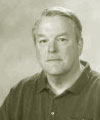 JOSEPH
AMATO (PhD) - Amato is Professor of Rural and Regional Studies
at Southwest State University in Marshall, Minnesota, and principal
founder of the Society for Local and Regional History. He is the author
of Dust: A History of the Small and the Invisible (California, 2000),
Bypass: a Memoir (2000), Golf Beats Us All (So We Love It) (1997); The
Decline of Rural Minnesota (1993); The Great Jerusalem Artichoke Circus:
The Buying and Selling of the American Rural Dream (1993); Victims and
Values: A History and Theory of Suffering (1990); and On Foot: A Cultural
History of Walking (2004). JOSEPH
AMATO (PhD) - Amato is Professor of Rural and Regional Studies
at Southwest State University in Marshall, Minnesota, and principal
founder of the Society for Local and Regional History. He is the author
of Dust: A History of the Small and the Invisible (California, 2000),
Bypass: a Memoir (2000), Golf Beats Us All (So We Love It) (1997); The
Decline of Rural Minnesota (1993); The Great Jerusalem Artichoke Circus:
The Buying and Selling of the American Rural Dream (1993); Victims and
Values: A History and Theory of Suffering (1990); and On Foot: A Cultural
History of Walking (2004).
HOMEPAGE > http://www.southwestmsu.edu/regional/Staffpages/JosephAmato/
ESSAY > Review - Wanderlust: A History of Walking >
http://www.findarticles.com/p/articles/mi_m2005/is_1_35/ai_79151302/print
TEXT > Rethinking Home: A Case for Writing Local History >
http://www.ucpress.edu/books/sale/pages/9283.html
TEXT > On Foot: A Cultural History of Walking >
http://www.nyupress.org/product_info.php?cPath=28&products_id=3629
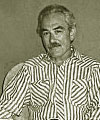 KEITH
BASSO (PhD) is a anthropologist who studies language and culture.
He has done fieldwork in Australia and the American Southwest. Basso's
fieldwork includes a long term relationship with the Western Apache
community of Cibecue which began in 1959 and is still there today. He
received his B.A. magna cum laude from Harvard University in 1962. Basso
received his Ph. D. from Stanford University. He was a fellow at the
Institute for Advanced Study at Princeton, New Jersey and the Weatherhead
Fellow at the School of American Research at Santa Fe, Mew Mexico. In
1967 he joined the faculty of the Department of Anthropology at the
University of Arizona. He became an Assistant Professor of Anthropology
at the University of Arizona. Basso is currently a member of the Anthropology
Department at the University of New Mexico. He has written and edited
many books. Basso has also written numerous articles dealing with language
and culture. KEITH
BASSO (PhD) is a anthropologist who studies language and culture.
He has done fieldwork in Australia and the American Southwest. Basso's
fieldwork includes a long term relationship with the Western Apache
community of Cibecue which began in 1959 and is still there today. He
received his B.A. magna cum laude from Harvard University in 1962. Basso
received his Ph. D. from Stanford University. He was a fellow at the
Institute for Advanced Study at Princeton, New Jersey and the Weatherhead
Fellow at the School of American Research at Santa Fe, Mew Mexico. In
1967 he joined the faculty of the Department of Anthropology at the
University of Arizona. He became an Assistant Professor of Anthropology
at the University of Arizona. Basso is currently a member of the Anthropology
Department at the University of New Mexico. He has written and edited
many books. Basso has also written numerous articles dealing with language
and culture.
Vine Deloria, in a review for the Journal of the West, said, "[in
Wisdom Sits in Places] Basso illustrates the idea that language and
linguistics are mutually supportive and irretrievably combined so that
knowing language connects an individual to the land and knowing the
land holds the personality together in a cohesive, balanced unity."
TEXT > Wisdom Sits in Places > http://unmpress.com/Book.php?id=770
HOMEPAGE > http://www.unm.edu/~anthro/
AWARD > Staley Prize 2001 > http://www.sarweb.org/staley/recipients/recipient01.htm
BIBLIOGRAPHY > http://www.mnsu.edu/emuseum/information/biography/abcde/basso_keith.html
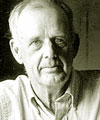 WENDELL
BERRY - Poet, essayist, farmer, and novelist Wendell Berry
was born on August 5, 1934, in Newcastle, Kentucky. He attended the
University of Kentucky at Lexington where he received a B.A. in English
in 1956 and an M.A. in 1957. Berry is the author of more than thirty
books of poetry, essays, and novels. His collections of poetry include
A Timbered Choir: The Sabbath Poems 1979-1997 (Counterpoint, 1997),
Entries: Poems (1994), Traveling at Home (1989), Collected Poems 1957-1982
(1985), Clearing (1977), There Is Singing Around Me (1976), and The
Broken Ground (1964). His novels include A World Lost (1996), Remembering
(1988), and The Memory of Old Jack. Berry is also the author of prose
collections including Another Turn of the Crank (Counterpoint, 1995),
Sex, Economy, Freedom, & Community (1993), Standing on Earth: Selected
Essays (1991), and A Continuous Harmony: Essays Cultural and Agricultural
(1972). He has taught at New York University and at the University of
Kentucky. Among his honors and awards are fellowships from the Guggenheim
and Rockefeller Foundations, a Lannan Foundation Award, and a grant
from the National Endowment for the Arts. He married Tanya Amyx in 1957;
they have two children. Wendell Berry lives on a farm in Port Royal,
Kentucky. WENDELL
BERRY - Poet, essayist, farmer, and novelist Wendell Berry
was born on August 5, 1934, in Newcastle, Kentucky. He attended the
University of Kentucky at Lexington where he received a B.A. in English
in 1956 and an M.A. in 1957. Berry is the author of more than thirty
books of poetry, essays, and novels. His collections of poetry include
A Timbered Choir: The Sabbath Poems 1979-1997 (Counterpoint, 1997),
Entries: Poems (1994), Traveling at Home (1989), Collected Poems 1957-1982
(1985), Clearing (1977), There Is Singing Around Me (1976), and The
Broken Ground (1964). His novels include A World Lost (1996), Remembering
(1988), and The Memory of Old Jack. Berry is also the author of prose
collections including Another Turn of the Crank (Counterpoint, 1995),
Sex, Economy, Freedom, & Community (1993), Standing on Earth: Selected
Essays (1991), and A Continuous Harmony: Essays Cultural and Agricultural
(1972). He has taught at New York University and at the University of
Kentucky. Among his honors and awards are fellowships from the Guggenheim
and Rockefeller Foundations, a Lannan Foundation Award, and a grant
from the National Endowment for the Arts. He married Tanya Amyx in 1957;
they have two children. Wendell Berry lives on a farm in Port Royal,
Kentucky.
CONVERSATION > Wendell Berry & Gary Snyder > 10 November
1999
http://www.lannan.org/lf/rc/event/wendell-berry/
http://www.lannan.org/lf/rc/event/gary-snyder/
INTERVIEW > "Field Observations: An Interview with Wendell
Berry"
http://arts.envirolink.org/interviews_and_conversations/WendellBerry.html
WB LINKS> http://brtom.org/wb/berry.html
ESSAY> Orion Magazine > "Compromise, Hell!"
http://www.orionsociety.org/pages/om/04-6om/Berry.html
ESSAY> Orion Magazine > "The Idea of a Local Economy"
http://www.oriononline.org/pages/om/archive_om/Berry/Local_Economy.html
ESSAY> Orion Magazine > "Thoughts in the Presence of Fear"
http://www.oriononline.org/pages/oo/sidebars/America/Berry.html
ESSAY> Orion Magazine > "A Citizen's Response to the National
Security Strategy
of the United States of America"
http://www.oriononline.org/pages/om/03-2om/Berry.html
ESSAY> Orion Magazine > "The Agrarian Standard"
http://www.oriononline.org/pages/om/02-3om/Berry.html
ESSAY> Resurgence Magazine > "Global Problems, Local Solutions"
http://resurgence.gn.apc.org/issues/berry206.htm
ESSAY> Resurgence Magazine > "The Failure of War"
http://resurgence.gn.apc.org/issues/berry215.htm
ESSAY> Resurgence Magazine > "In Distrust of Movements"
http://resurgence.gn.apc.org/issues/berry198.htm
ARTICLE > Grist Magazine > "Go Ahead, Mr. Wendell"
http://www.grist.org/news/maindish/2004/08/05/engler-berry/
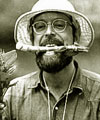 STEVE BRILL - As a naturalist and environmental educator, "Wildman" Steve Brill has been a leading expert on the identification, ecological harvesting, and food and medicinal uses of North America's renewable edible/medicinal wild plants and mushrooms since he began leading tours in and around New York City in 1982. His critically acclaimed Identifying and Harvesting Edible and Medicinal Plants in Wild (and Not-So-Wild) Places (William Morrow Publishers, 1994), and The Wild Vegetarian Cookbook (Harvard Common Press, 2002) are classics in the field. He has been covered often in the New York Times and has appeared on The CBS Evening News and the Late Show with David Letterman, but he's best known for having been arrested and handcuffed for eating a dandelion in Central Park. He speaks and leads tours focusing on common, renewable edible/medicinal wild plants and mushrooms, associated science, ecology, food preparation, history, folklore, and mythology, seasoned with his anecdotes and humor. STEVE BRILL - As a naturalist and environmental educator, "Wildman" Steve Brill has been a leading expert on the identification, ecological harvesting, and food and medicinal uses of North America's renewable edible/medicinal wild plants and mushrooms since he began leading tours in and around New York City in 1982. His critically acclaimed Identifying and Harvesting Edible and Medicinal Plants in Wild (and Not-So-Wild) Places (William Morrow Publishers, 1994), and The Wild Vegetarian Cookbook (Harvard Common Press, 2002) are classics in the field. He has been covered often in the New York Times and has appeared on The CBS Evening News and the Late Show with David Letterman, but he's best known for having been arrested and handcuffed for eating a dandelion in Central Park. He speaks and leads tours focusing on common, renewable edible/medicinal wild plants and mushrooms, associated science, ecology, food preparation, history, folklore, and mythology, seasoned with his anecdotes and humor.
Exerpt from National Geographic Magazine / May 1993 >
http://www.wildmanstevebrill.com/Clippings.folder/NationalGeographic.html
On school days dozens of teachers lead classes to the park. For many children this is their only opportunity to see a world governed by nature's rhythms. Just north of the zoo I join first graders listening to "Wildman" Steve Brill. His outfit includes a pith helmet and a T shirt with a drawing of himself discovering a huge mushroom. The drawing is accurate: beard, rounded forehead, untamed hair, and eyes that look permanently excited.
Wildman, 43, supports himself by taking people on edible tours of city parks. His interest in plants began when Greek women in his home borough of Queens told him that they picked grape leaves in a neighborhood park. He became a professional food gatherer—or forager-ten years ago. Around the same time, he adopted his new name.
Wildman is a natural teacher. Through noises and contortions he transforms himself into whatever living entity he describes. His arms and neck arch and he is a worm looking for apples; the next moment his body bellows outward and he is a walnut tree intent on protecting its turf from other trees. Within minutes he makes me desperate to learn more about the plants I take for granted.
Although he is self-taught, Wildman sounds encyclopedic as he interweaves folklore, history, science, and nature: "Indians used black walnut to dye clothing. Tea from the hawthorn tree can help with heart disease. White snakeroot is poisonous. If cows eat it, they excrete the deadly poison through their milk and pass it to humans. It killed Abraham Lincoln's mother. I'll bet they never teach you these things in school."
HOMEPAGE > http://www.wildmanstevebrill.com
ARTICLE > Press Clippings > http://www.wildmanstevebrill.com/Clippings.folder/Clippings.html
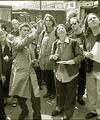 BILL
BROWN (PhD) - Brown is a founder member of the Surveillance
Camera Players, a New York-based collective formed in 1996 to protest
against the use of surveillance cameras in public places. Their opposition
is manifested through the performance of specially adapted plays directly
in front of public cameras. BILL
BROWN (PhD) - Brown is a founder member of the Surveillance
Camera Players, a New York-based collective formed in 1996 to protest
against the use of surveillance cameras in public places. Their opposition
is manifested through the performance of specially adapted plays directly
in front of public cameras.
HOMEPAGE > http://www.notbored.org/the-scp.html
SCP WALKS > http://www.notbored.org/scowt.html
PROJECT > Live at Leeds > http://www.notbored.org/leeds.html
ARTICLE > WIRED > Live From N.Y.: Security Cam Hams >
http://www.wired.com/news/privacy/0,1848,43272,00.html
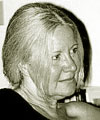 SUSAN
BUCK-MORSS (PhD) is Professor of Political Philosophy and Social
Theory, Department of Government, and Professor of Visual Culture, Department
of Art History, Cornell University. She is the author of The Dialectics
of Seeing: Walter Benjamin and the Arcades Project (MIT Press, 1989),
The Origin of Negative Dialectics: Theodore Adorno, Walter Benjamin
and the Frankfurt Institute (Free Press, 1979), and the co-author of
Ground Control: Technology and Utopia (Art Books International, 1997).
She has also written a number of innovative essays on aesthetics, politics,
and the work of art, including: "Aesthetics and Anaesthetics: Walter
Benjamin's Artwork Essay Reconsidered," (October 62, Fall 1992)
and "The City as Dreamworld and Catastrophe," (October 73,
Summer 1995). SUSAN
BUCK-MORSS (PhD) is Professor of Political Philosophy and Social
Theory, Department of Government, and Professor of Visual Culture, Department
of Art History, Cornell University. She is the author of The Dialectics
of Seeing: Walter Benjamin and the Arcades Project (MIT Press, 1989),
The Origin of Negative Dialectics: Theodore Adorno, Walter Benjamin
and the Frankfurt Institute (Free Press, 1979), and the co-author of
Ground Control: Technology and Utopia (Art Books International, 1997).
She has also written a number of innovative essays on aesthetics, politics,
and the work of art, including: "Aesthetics and Anaesthetics: Walter
Benjamin's Artwork Essay Reconsidered," (October 62, Fall 1992)
and "The City as Dreamworld and Catastrophe," (October 73,
Summer 1995).
HOMEPAGE > Cornell University > Department of Government
http://falcon.arts.cornell.edu/Govt/faculty/Buck-Morss.html
ESSAY > "TIME AND THE IMAGE: Darwinianism in Reverse"
http://cepa.buffnet.net/exhibits/EXHIBIT.19981999/ruinsinreverse/RIR.06.essay.buckmorss.html
INTERVIEW > "Aesthetics after the end of art: an interview
with Susan Buck-Morss"
Aesthetics and the Body Politic > Art Journal, Spring, 1997
by Grant H. Kester
http://www.findarticles.com/p/articles/mi_m0425/is_n1_v56/ai_19827690
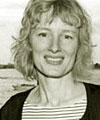 JANET
CARDIFF was born in Brussels, Ontario, Canada, in 1957. She
studied at Queen's University (BFA) in Kingston and the University of
Alberta (MVA). She currently lives and works in Lethbridge, Alberta. JANET
CARDIFF was born in Brussels, Ontario, Canada, in 1957. She
studied at Queen's University (BFA) in Kingston and the University of
Alberta (MVA). She currently lives and works in Lethbridge, Alberta.
Her artworks, whether they are installations or walking pieces, are
mainly audio based. She has been included in exhibitions such as: "Sculpture
Projects", Muenster, 1997, "Present Tense, Nine Artists in
the Nineties", SFMOMA, "NowHere", Louisiana Museum, Denmark,
"The Museum as Muse", MOMA, Sao Paulo Bienal '98, 6th International
Istanbul Biennial, The Carnegie International '99/00, "The Tate
Modern Opening Exhibition" as well as a project commisioned by
Artangel in London. Her work is included in private and public collections
in Canada, the United States and Europe.
Janet is represented by Luhring Augustine Gallery, NYC, and Barbara
Weis Gallery, Berlin.
HOMEPAGE > http://www.abbeymedia.com/Janweb/jan.htm
EXHIBITION > PS1 > http://www.ps1.org/cut/press/cardiff.html
EXHIBITION > Tate Liverpool > http://www.tate.org.uk/liverpool/exhibitions/janetcardiff/
EXHIBITION > Walk Ways > http://www.absolutearts.com/artsnews/2003/06/18/31136.html
ARTICLE > http://www.bombmagazine.com/cardiff/cardiff.html
ARTICLE > JANET CARDIFF:THE MISSING VOICE (Case Study B): An Audio
Walk
http://www.artfocus.com/JanetCardiff.html
ARTICLE > Janet Cardiff: Her Long Black Hair > http://www.artcritical.com/ludwin/VLCardiff.htm
ARTICLE > http://dks.thing.net/JanetCardiff-PressPreview.html
INTERVIEW > http://www.cmoa.org/international/html/forum/cardiffresponse.htm
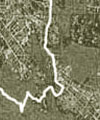 FRANCESCO
CARERI (PhD) graduated in architecture in 1993 in Rome. His
doctoral research began in Naples in 1996, resulting in a thesis entitled
"The Journey". He is a member of the Stalker urban art workshop,
an open interdisciplinary structure that conducts research on the city
through experiences of transurbance in open spaces and in interaction
with the inhabitants. He has taught at the Institut d'Arts Visuels d'Orléans
and the Schools of Architecture of Reggio Calabria and Roma Tre, experimenting
together with the students on methods of reappropriation and direct
intervention in public space. He has recently published a book on Constant
and the Situationist city Constant imagined in the late 1950s and early
1960s (Constant / New Babylon, una città nomade, Testo &
Immagine, Turin 2001), and participated with Stalker in many international
exhibitions of contemporary art and architecture. FRANCESCO
CARERI (PhD) graduated in architecture in 1993 in Rome. His
doctoral research began in Naples in 1996, resulting in a thesis entitled
"The Journey". He is a member of the Stalker urban art workshop,
an open interdisciplinary structure that conducts research on the city
through experiences of transurbance in open spaces and in interaction
with the inhabitants. He has taught at the Institut d'Arts Visuels d'Orléans
and the Schools of Architecture of Reggio Calabria and Roma Tre, experimenting
together with the students on methods of reappropriation and direct
intervention in public space. He has recently published a book on Constant
and the Situationist city Constant imagined in the late 1950s and early
1960s (Constant / New Babylon, una città nomade, Testo &
Immagine, Turin 2001), and participated with Stalker in many international
exhibitions of contemporary art and architecture.
Walkscapes: Walking as an Aesthetic Practice
Walkscapes deals with strolling as an architecture of landscape. Walking
as an autonomous form of art, a primary act in the symbolic transformation
of the territory, an aesthetic instrument of knowledge and a physical
transformation of the "negotiated" space, which is converted
into an urban intervention. From primitive nomadism to Dada and Surrealism,
from the Lettrist to the Situationist International, and from Minimalism
to Land Art, this book narrates the perception of landscape through
a history of the traversed city.
Stalker / Osservatorio Nomad > Francesco Careri (1966), Aldo Innocenzi
(1964), Romolo Ottaviani (1967), Giovanna Ripepi (1965), Lorenzo Romito
(1965), Valerio Romito (1971)
This hybrid collective, founded in Rome in 1995 is defined as an urban
art laboratory. In 2000, Stalker presented Transborderline, a habitable
structure made of barbless barbed wire symbolizing a three-dimensional
frontier, shown in several exhibitions as the 7thVenice Biennal or Manifesta
3 in Lubljiana. In France, in 1997, the group exhibited at the Visual
Arts Institute Gallery in Orleans, then at the Arc en Rêve Architectural
Centre in Bordeaux in 2000. In 2001, Stalker took part in the exhibitions
Paysages d’entre villes/Intercity Landscapes at the Zadkine Museum
in Paris, Libérez Beaubourg/Free Beaubourg at the Pompidou Centre,
and the GNS exhibition held at the Palais de Tokyo in 2003. In preferring
“architectural actions”, Stalker focuses its interest on
the city and everything that forms its abandoned and disused spaces
and waste areas. It suggests to the public various walks through “urban
voids”, and thus criss-crosses, Rennes, Milan, Miami or Berlin.
Close to the theories of the Internationale Situationniste, Stalker
creates a map based on residual places left over by galloping urbanism.
By means of the above-mentioned methods, the collective proposes a reverse
reading of a network which forms an architectural project: the urban
mass turns into blocks separated by all the many channels of marginal
zones devoid of all functionalism. Since May 1999, Stalker and the Kurdish
community in Rome have been sharing a building called “Ararat”.
The group is thus experimenting with a new form of public space based
on accommodation and hospitality. Since 2001, Stalker promotes a research
network called the Osservatorio Nomade. This contributes to the creative
evolution of territories through crossed fields of planning, experimentation
and educational programs in relation with local inhabitants.
HOMEPAGE > Stalker > http://digilander.libero.it/stalkerlab/tarkowsky/tarko.html
HOMEPAGE > Osservatorio Nomad > http://www.osservatorionomade.net
TEXT > Walkscapes: Walking as an Aesthetic Practice >
http://www.booklounge.com/books/landscape-architecture/theory-history/
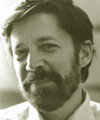 EDWARD
CASEY (PhD) - Casey is Leading Professor of Philosophy at SUNY,
Stony Brook, where he has been chair of the department during most of
the last decade. His early writings concerned imagination and memory,
and in the 1990s he turned to the question of place in a series of books
on this subject: Getting Back into Place, The Fate of Place, and Representing
Place in Landscape Paintings and Maps. His effort has been to bring
this neglected topic to a new level of rigorous description, and in
particular to show the intimate ties between place and bodily experience.
An exploration of contemporary painters is soon to appear: Earth-Mapping:
Concerning Artists Who Map the Landscape. Still more recently, a study
entitled The World at a Glance has been completed. New forays concern
the edge and human feeling. EDWARD
CASEY (PhD) - Casey is Leading Professor of Philosophy at SUNY,
Stony Brook, where he has been chair of the department during most of
the last decade. His early writings concerned imagination and memory,
and in the 1990s he turned to the question of place in a series of books
on this subject: Getting Back into Place, The Fate of Place, and Representing
Place in Landscape Paintings and Maps. His effort has been to bring
this neglected topic to a new level of rigorous description, and in
particular to show the intimate ties between place and bodily experience.
An exploration of contemporary painters is soon to appear: Earth-Mapping:
Concerning Artists Who Map the Landscape. Still more recently, a study
entitled The World at a Glance has been completed. New forays concern
the edge and human feeling.
HOMEPAGE > http://www.sunysb.edu/philosophy/new/faculty/casey.html
ESSAY > Smooth Spaces and Rough-Edged Places: The Hidden History
of Place >
http://www.sunysb.edu/philosophy/new/research/casey_2.html
TEXT > The Fate of Place: A Philosophical History > http://www.ucpress.edu/books/pages/6718.html
ROSALYN DEUTSCHE (PhD) - Since her book Evictions (1996), Rosalyn Deutsche (Barnard College and Columbia University, New York) has become widely recognised as one of the foremost thinkers in connection with the relationships between contemporary art and the politics of space.
Since the 1980s a great deal has been written on the relationship between art, architecture, and urban planning and design, on the one hand, and the politics of space on the other. In Evictions Rosalyn Deutsche investigates -- and protests against -- the dominant uses of this interdisciplinary discourse.
Deutsche argues that critics on both the left and the right invoke harmonious images of space that conceal and justify exclusions -- whether the space in question is a city, park, institution, exhibition, identity, or work of art. By contrast, she calls for a democratic spatial critique that takes account of the conflicts that produce and maintain all spaces, including the space of politics itself.
Evictions examines how aesthetic and urban ideologies were combined during the last decade to legitimize urban redevelopment programs that claimed to be beneficial to all, yet in reality tried to expunge traditional working classes from the city. Combining critical aesthetic theory about the social production of art with critical urban theory about the social production of space, Deutsche exposes this unspoken agenda. She then responds to a new alliance of prominent urban and cultural scholars who use critical spatial theory to protect traditional left political projects against the challenges posed by new radical cultural practices.
In her critique, Deutsche mobilizes feminist and postmodern ideas about the politics of visual representation and subjectivity. She also intervenes in debates taking place in art, architecture, and urban studies about the meaning of public space, and places these struggles within broader contests over the definition of democracy. Opposing the nostalgic belief that democracy's survival demands the recovery of a once unified public sphere, Deutsche contends that conflict, far from undermining public space, is a prerequisite for its existence and growth.
HOMEPAGE > http://www.columbia.edu/cu/arthistory/html/dept_faculty_deutsche.html
INTERVIEW > Tate Modern > Rosalyn Deutsche and Jane Rendell >
http://www.tate.org.uk/modern/eventseducation/talksdiscussions/
TEXT > Evictions: Art and Spatial Politics >
http://mitpress.mit.edu/catalog/item/default.asp?tid=8129&ttype=2
ESSAY > The Question of "Public Space" >
http://www.thephotographyinstitute.org/www/journals/1998/rosalyn_deutsche.html
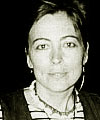 JAY
GRIFFITHS is an award-winning writer whose work has appeared
in the London Review of Books, The Guardian, The Observer, and the Ecologist.
She lives in Wales. Griffiths' book "A Sideways Look at Time"
won the 2003 Barnes & Noble Discover Great New Writers Award. JAY
GRIFFITHS is an award-winning writer whose work has appeared
in the London Review of Books, The Guardian, The Observer, and the Ecologist.
She lives in Wales. Griffiths' book "A Sideways Look at Time"
won the 2003 Barnes & Noble Discover Great New Writers Award.
ESSAY > Consumerism Consumes > http://resurgence.gn.apc.org/articles/griffiths.htm
ESSAY > The Acorn Theory of Personhood > http://resurgence.gn.apc.org/184/griffiths184br.htm
ESSAY > At the Mayday protest > http://www.lrb.co.uk/v22/n12/grif02_.html
ESSAY > Noddy is on page 248 > http://www.lrb.co.uk/v21/n12/grif02_.html
ESSAY > Time’s Singed Chariot >
http://www.theecologist.org/archive_article.html?article=404&category=63
ESSAY > Big ones with bells on >
http://www.theecologist.org/archive_article.html?article=416&category=39
ESSAY > Art as a Weapon of Protest >
http://www.aislingmagazine.com/aislingmagazine/articles/TAM23/Art.html
ESSAY > Playing For Time - importance of recreation in society
>
http://www.findarticles.com/p/articles/mi_m2465/is_4_31/ai_74583526
ESSAY > Boo to Captain Clock: Jay Griffiths sides with the agitators
and celebrants who subvert the regulation of time by potentates and
pencil-pushers - Taking Back Our Time >
http://www.findarticles.com/p/articles/mi_m0JQP/is_2002_March/ai_84306136
INTERVIEW > http://www.wpr.org/book/030223b.html
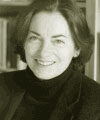 DOLORES HAYDEN - Ms. Hayden, an architect and urban historian, is the author of several award-winning books about American landscapes and the politics of design. Her latest is A Field Guide to Sprawl, a "devil's dictionary of bad building patterns illustrated with color aerial photography by Jim Wark, published by W. W. Norton in 2004. Building Suburbia: Green Fields and Urban Growth, 1820-2000, a history of seven types of American suburbs, appeared from Pantheon Books in 2003. Hayden has also worked on inner cities. The Power of Place: Urban Landscapes as Public History documents her years as the founder of a nonprofit corporation dealing with public art, public history, and historic preservation in Los Angeles. Gender and space are the subjects of two books, The Grand Domestic Revolution: A History of Feminist Designs for American Homes, Neighborhoods, and Cities (The MIT Press, 1981) and Redesigning the American Dream: Gender, Housing, Work, and Family Life (Norton, 1985, revised and expanded, 2002). Ms. Hayden has been a Guggenheim fellow as well as receiving Rockefeller, NEH, NEA, Whitney Humanities Center, and ACLS/Ford fellowships. Since 1973, Ms. Hayden has held academic appointments in architecture, landscape architecture, urban planning, and American studies in a teaching career that has spanned MIT, UC Berkeley, and UCLA as well as Yale, where she is now Professor of Architecture and Professor of American Studies. A collection of her poetry , American Yard , will appear in fall 2004. DOLORES HAYDEN - Ms. Hayden, an architect and urban historian, is the author of several award-winning books about American landscapes and the politics of design. Her latest is A Field Guide to Sprawl, a "devil's dictionary of bad building patterns illustrated with color aerial photography by Jim Wark, published by W. W. Norton in 2004. Building Suburbia: Green Fields and Urban Growth, 1820-2000, a history of seven types of American suburbs, appeared from Pantheon Books in 2003. Hayden has also worked on inner cities. The Power of Place: Urban Landscapes as Public History documents her years as the founder of a nonprofit corporation dealing with public art, public history, and historic preservation in Los Angeles. Gender and space are the subjects of two books, The Grand Domestic Revolution: A History of Feminist Designs for American Homes, Neighborhoods, and Cities (The MIT Press, 1981) and Redesigning the American Dream: Gender, Housing, Work, and Family Life (Norton, 1985, revised and expanded, 2002). Ms. Hayden has been a Guggenheim fellow as well as receiving Rockefeller, NEH, NEA, Whitney Humanities Center, and ACLS/Ford fellowships. Since 1973, Ms. Hayden has held academic appointments in architecture, landscape architecture, urban planning, and American studies in a teaching career that has spanned MIT, UC Berkeley, and UCLA as well as Yale, where she is now Professor of Architecture and Professor of American Studies. A collection of her poetry , American Yard , will appear in fall 2004.
HOMEPAGE > http://www.architecture.yale.edu/faculty/professors/hayden/hayden.htm
HOMEPAGE > http://www.doloreshayden.com/index.htm
TEXT > The Power of Place: Urban Landscapes as Public History
http://mitpress.mit.edu/catalog/item/default.asp?sid=FC6C5495-66B9-4C2A-8E07-987043688322&ttype=2&tid=7729
INTERVIEW > Tate Modern > Dolores Hayden and Gillian Rose
http://www.tate.org.uk/modern/eventseducation/talksdiscussions/
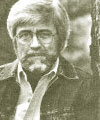 WILLIAM
LEAST HEAT-MOON - Author of one cult-classic road novel, Blue
Highways, and one remarkable portrait of a small county in the American
Midwest, PrairyErth, William Least Heat-Moon stands as one of the most
influential travel writers of our time. His latest achievement, River-Horse,
the third book of a trilogy that has taken him more than twenty years
to complete, documents the adventure of a coast to coast journey from
Elizabeth, New Jersey to Astoria, Oregon, made entirely over the nation's
waterways. WILLIAM
LEAST HEAT-MOON - Author of one cult-classic road novel, Blue
Highways, and one remarkable portrait of a small county in the American
Midwest, PrairyErth, William Least Heat-Moon stands as one of the most
influential travel writers of our time. His latest achievement, River-Horse,
the third book of a trilogy that has taken him more than twenty years
to complete, documents the adventure of a coast to coast journey from
Elizabeth, New Jersey to Astoria, Oregon, made entirely over the nation's
waterways.
INTERVIEW > http://www.pbs.org/lewisandclark/archive/moon.html
INTERVIEW > http://www.powells.com/authors/leastheatmoon.html
INTERVIEW > http://www.amazon.com/exec/obidos/tg/feature/
INTERVIEW > http://wiredforbooks.org/williamleast/
INTERVIEW > http://www.wooster.edu/artfuldodge/interviews/heat-moon.htm
ARTICLE > Road Scholar > http://www.salon.com/books/int/1999/12/09/moon/
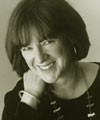 LINDA HOGAN is a Chickasaw writer. She is the author of several books. These include Dwellings; A Spiritual History of The Natural World (W. W. Norton, 1995), a novel entitled Power (W.W. Norton), as well as novels Mean Spirit, and Solar Storms (Simon and Schuster). Mean Spirit was a finalist for a Pulitzer, and The Book of Medicines, a collection of poems, was a finalist for the National Book Critics Circle Award. LINDA HOGAN is a Chickasaw writer. She is the author of several books. These include Dwellings; A Spiritual History of The Natural World (W. W. Norton, 1995), a novel entitled Power (W.W. Norton), as well as novels Mean Spirit, and Solar Storms (Simon and Schuster). Mean Spirit was a finalist for a Pulitzer, and The Book of Medicines, a collection of poems, was a finalist for the National Book Critics Circle Award.
Hogan has received numerous awards, including a National Endowment for the Arts grant, a Guggenheim fellowship, a Lannan Foundation award, the Five Civilized Tribes Museum playwriting award, and in 1998, the Lifetime Achievement Award from the Native Writers Circle of the Americas. She has written a documentary narrative about the history of American Indian Religious Freedom, Everything Has A Spirit, seen now on PBS. She is one of three Indian writers hired by the Smithsonian National Museum of the American Indian to co-author a book for the museum's grand opening. Hogan's section is on tradition and how it has been carried into recent times. She was also a co-editor, with Brenda Peterson, of Intimate Nature: The Bond Between Women and Animals, from Ballantine, and The Sweet Breathing of Plants, from Farrar Straus and Giroux. Two other new books will be out in June of 2000, The Woman Who Watches Over The World; A Native Memoir, from W. W. Norton; and The Mysterious Journey of The Gray Whale, (National Geographic Books). She is presently working on another novel, a book of poems, and two horses.
Hogan is a professor emeritus in the English Department at the University of Colorado in Boulder.
ESSAY > For Life's Sake > http://usinfo.state.gov/products/pubs/writers/hogan.htm
INTERVIEW > http://www.terrain.org/essays/5/murray.htm
INTERVIEW > http://thewitness.org/archive/sept2002/colatostiinterview.html
BIBLIOGRAPHY > http://voices.cla.umn.edu/newsite/authors/HOGANlinda.htm
BIBLIOGRAPHY > http://www.hanksville.org/storytellers/linda/
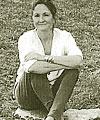 BASIA
IRLAND - Based in Albuquerque, New Mexico, Basia Irland describes
herself as "a sculptor and installation artist, a poet and book
artist, and an activist in water issues." Her thoughtful interdisciplinary
projects combine beautiful craftsmanship, a fascination with research
and a participative engagement with the viewer. BASIA
IRLAND - Based in Albuquerque, New Mexico, Basia Irland describes
herself as "a sculptor and installation artist, a poet and book
artist, and an activist in water issues." Her thoughtful interdisciplinary
projects combine beautiful craftsmanship, a fascination with research
and a participative engagement with the viewer.
Basia Irland received significant attention for "A Gathering
of Waters: Rio Grande, Source to Sea" (1995- 2000) which was accompanied
by a documentary in 1999. This complex participatory project involved
an extended performance staged along the path of the world's third most
endangered river, the 1885-mile Rio Grande/Río Bravo basin, which
extends from Colorado, through New Mexico, along the Mexican border,
and empties into the Gulf of Mexico.
"Hundreds of artists, government agencies, private water users,
farmers, ranchers, Native American leaders, and ordinary people collected
small river water samples in a canteen and logged their experiences
in a field book. The canteen and log book, which were voluntarily passed
hand-to-hand, community-to- community, traveled by "boat, raft,
canoe, hot-air balloon, car, van, horseback, truck, bicycle, mail, and
by foot," 43 tying diverse communities to a common interest."
Basia Irland's work physically embraces the notion of artist as field
researcher and community activist calling attention to important water
issues in the American Southwest. Through practical water retaining
landscaping projects, artist books, and her curious wooden backpacks
loaded with water samples and intricate maps, Irland brings a high level
of art and engagement to her task.
HOMEPAGE > http://www.unm.edu/~basia/BIRLAND/
EXHIBITION > GreenMuseum >
http://www.greenmuseum.org/content/artist_index/artist_id-80.html
EXHIBITION > Ecovention > http://greenmuseum.org/c/ecovention/sect2.html#community
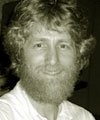 KELLY
KINDSCHER (PhD), who in 1983 spent 80 days walking 690 miles
across the prairie from Kansas City to the Rocky Mountain foothills,
has studied systematics and ecology at the University of Kansas and
is the author of The Kansas Food System, Medicinal Wild Plants of the
Prairie: An Ethnobotanical Guide, and a "Bibliography for the North
American Prairies" in CoEvolution Quarterly. He has a Ph.D. in
plant ecology from the University of Kansas and is a consultant for
Prairieland Ecological Services. Dr. Kindscher's research interests
are focused on prairie and montane meadow plant communities, wetland
and prairie restoration, conservation of Midwest/Great Plains ecosystems,
and ethnobotany. KELLY
KINDSCHER (PhD), who in 1983 spent 80 days walking 690 miles
across the prairie from Kansas City to the Rocky Mountain foothills,
has studied systematics and ecology at the University of Kansas and
is the author of The Kansas Food System, Medicinal Wild Plants of the
Prairie: An Ethnobotanical Guide, and a "Bibliography for the North
American Prairies" in CoEvolution Quarterly. He has a Ph.D. in
plant ecology from the University of Kansas and is a consultant for
Prairieland Ecological Services. Dr. Kindscher's research interests
are focused on prairie and montane meadow plant communities, wetland
and prairie restoration, conservation of Midwest/Great Plains ecosystems,
and ethnobotany.
HOMEPAGE > http://www.kbs.ku.edu/people/html/facweb_kindscher.htm
TEXT > http://www.kansaspress.ku.edu/kinedi.html
ORGANIZATION > Kansas Land Trust > http://www.klt.org/index.php?page=people
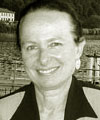 BARBARA KIRSHENBLATT-GIMBLETT (PhD) is professor of the Department of Performance Studies, Tisch School of the Arts, New York University. Her research interests have focused in heritage politics, vernacular culture, including representations in performance and exhibition history, as well as in Jewish social science. Her publications include Destination Culture: Tourism, Museums and Heritage (University of California Press, 1998); “Confusing Pleasures,” in The Traffic in Culture: Refiguring Art and Anthropology, ed. George Marcus and Fred Myers (University of California Press, 1995); "The Electronic Vernacular," in Connected: Engagements with Media, ed. George Marcus (University of Chicago Press, 1996); and “Objects of Ethnography” in Exhibiting Cultures. The Poetics and Politics of Museum Display, ed. Ivan Karp and Steven D. Lavine (Washington, D.C.: Smithsonian Institution Press, 1991). BARBARA KIRSHENBLATT-GIMBLETT (PhD) is professor of the Department of Performance Studies, Tisch School of the Arts, New York University. Her research interests have focused in heritage politics, vernacular culture, including representations in performance and exhibition history, as well as in Jewish social science. Her publications include Destination Culture: Tourism, Museums and Heritage (University of California Press, 1998); “Confusing Pleasures,” in The Traffic in Culture: Refiguring Art and Anthropology, ed. George Marcus and Fred Myers (University of California Press, 1995); "The Electronic Vernacular," in Connected: Engagements with Media, ed. George Marcus (University of Chicago Press, 1996); and “Objects of Ethnography” in Exhibiting Cultures. The Poetics and Politics of Museum Display, ed. Ivan Karp and Steven D. Lavine (Washington, D.C.: Smithsonian Institution Press, 1991).
HOMEPAGE > http://www.nyu.edu/classes/bkg/web/
HOMEPAGE > http://performance.tisch.nyu.edu/object/Kirshenblatt-GimblettB.html
ESSAY > Performance Studies > http://www.nyu.edu/classes/bkg/issues/rock2.htm
ESSAY > Playing to the Senses: Food as a Performance Medium >
http://www.nyu.edu/classes/bkg/issues/food-pr6.htm
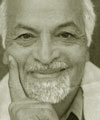 SATISH
KUMAR - In addition to being the founder of the Small School
and the Director of Programmes at Schumacher College, Satish Kumar is
currently the editor of Resurgence (an international magazine promoting
peace, non-violence, ecology, sustainability, organic agriculture, appropriate
technology and holistic philosophy). He has, in turn, been a Jain Muni
(until age 18), a campaigner for land reform in the Bhoodan movement
with Vinoba Bhave (until age 26), and a pilgrim for peace, walking from
India to America without any money, from 1962-1964. In 1968, Satish
established the London School of Non- violence in order to teach the
Gandhian way of passive resistance to the youth of Europe. His autobiography,
Path Without Destination, was published in 1999. In November 2001, Satish
was presented with the Jamnalal Bajaj International Award for "Promoting
Gandhian Values Abroad". SATISH
KUMAR - In addition to being the founder of the Small School
and the Director of Programmes at Schumacher College, Satish Kumar is
currently the editor of Resurgence (an international magazine promoting
peace, non-violence, ecology, sustainability, organic agriculture, appropriate
technology and holistic philosophy). He has, in turn, been a Jain Muni
(until age 18), a campaigner for land reform in the Bhoodan movement
with Vinoba Bhave (until age 26), and a pilgrim for peace, walking from
India to America without any money, from 1962-1964. In 1968, Satish
established the London School of Non- violence in order to teach the
Gandhian way of passive resistance to the youth of Europe. His autobiography,
Path Without Destination, was published in 1999. In November 2001, Satish
was presented with the Jamnalal Bajaj International Award for "Promoting
Gandhian Values Abroad".
HOMEPAGE > http://resurgence.gn.apc.org/satish/
RESURGENCE MAGAZINE > http://resurgence.gn.apc.org/home.htm
ESSAY > My Favourite Walk > http://resurgence.gn.apc.org/satish/kumar-hartland.htm
ESSAY > A Pilgrimage to Mount Kailash > http://resurgence.gn.apc.org/issues/kumar187.htm
ARTICLE > Walking The World For Peace > http://www.context.org/ICLIB/IC17/Kumar.htm
INTERVIEW > http://www.idler.co.uk/html/interviews/kumar.htm
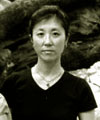 MIWON KWON (PhD) is Assistant Professor in the Department of Art History at UCLA. Her research and writings engage several disciplines including contemporary art, architecture, public art, and urban studies. She is a founding editor and publisher of Documents, a journal of art, culture, and criticism, and serves on the advisory board of October magazine. Her book One Place After Another: Site-Specific art and Locational Identity was recently published by The MIT Press. MIWON KWON (PhD) is Assistant Professor in the Department of Art History at UCLA. Her research and writings engage several disciplines including contemporary art, architecture, public art, and urban studies. She is a founding editor and publisher of Documents, a journal of art, culture, and criticism, and serves on the advisory board of October magazine. Her book One Place After Another: Site-Specific art and Locational Identity was recently published by The MIT Press.
HOMEPAGE > http://www.humnet.ucla.edu/humnet/arthist/faculty/kwon.html
ESSAY > Public Art and Urban Identities >
http://www.eipcp.net/diskurs/d07/text/kwon_prepublic_en.html
ESSAY > http://www.thephotographyinstitute.org/www/journals/1998/miwon_kwon.html
TEXT > One Place after Another: Site-Specific Art and Locational Identity
http://mitpress.mit.edu/catalog/item/default.asp
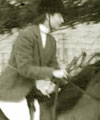 DONNA
LANDRY (PhD) - Landry is Professor of English, Wayne State
University and Honorary Research Fellow, University of Exeter. DONNA
LANDRY (PhD) - Landry is Professor of English, Wayne State
University and Honorary Research Fellow, University of Exeter.
TEXT > The Invention of the Countryside: Hunting, Walking and Ecology
in English Literature, 1671-1831 by Donna Landry. Houndmills and New
York: Palgrave, 2001.
In the 18th century, increased sport and tourism began to supplement
the use of land for agricultural production. Between the Game Act of
1671 and its repeal in 1831, writers on walking and hunting often held
opposed views, but contributed equally to the origins of modern ecology,
while attempting to preserve common rights in an era of growing privatization.
ARTICLE > Radical Walking - In a country obsessed with property
and passion, the mere act of walking has often been seen as a political
challenge. Yet English history is full of characters who have pushed
against the boundaries to reclaim the empire underneath their feet.
HOMEPAGE > http://www.cla.wayne.edu/english/People/faculty/landryd/
ARTICLE > http://www.opendemocracy.net/debates/article.jsp?id=4&debateId=61&articleId=465
TEXT > The Country and the City Revisited: England and the Politics
of Culture, 1550–1850 >
http://uk.cambridge.org/catalogue/catalogue.asp?isbn=0521592011
INTERVIEW > http://www.wbez.org/audio_library/od_raoct04.asp#11
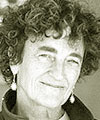 LUCY
LIPPARD is a writer and activist, author of 20 books on contemporary
art cultural criticism, including one novel. She has done performances,
comics, street theatre, and has curated some 50 exhibitions in the U.S.,
Europe, and Latin America. For thirty years she has worked with artist’s
groups such as the Artworkers’ Coalition, Ad Hoc Women Artists
Meeting for Cultural Change, The Alliance for Cultural Democracy (co-editor
of” How to ’92" in the Campaign for a Post-Columbian
World), and WAG (Women’s Action Coalition). She was co-founder
of Printed Matter, The Heriesies Collective and journal, PADD (Political
Art Documentation/Distribution) and its journal Upfront, and Artist
Call Against U.S. Intervention in Central America. She continues to
lecture frequently at museums and universities. At home, she has served
as member of the Santa Fe County Open Land, and Trails Planning and
Advisory Committee, edits her community newsletter, El Puente de Galiseo,
and is on the Sante Fe Railyard Design Competition committee (and juror)
with the Trust for Public Land. LUCY
LIPPARD is a writer and activist, author of 20 books on contemporary
art cultural criticism, including one novel. She has done performances,
comics, street theatre, and has curated some 50 exhibitions in the U.S.,
Europe, and Latin America. For thirty years she has worked with artist’s
groups such as the Artworkers’ Coalition, Ad Hoc Women Artists
Meeting for Cultural Change, The Alliance for Cultural Democracy (co-editor
of” How to ’92" in the Campaign for a Post-Columbian
World), and WAG (Women’s Action Coalition). She was co-founder
of Printed Matter, The Heriesies Collective and journal, PADD (Political
Art Documentation/Distribution) and its journal Upfront, and Artist
Call Against U.S. Intervention in Central America. She continues to
lecture frequently at museums and universities. At home, she has served
as member of the Santa Fe County Open Land, and Trails Planning and
Advisory Committee, edits her community newsletter, El Puente de Galiseo,
and is on the Sante Fe Railyard Design Competition committee (and juror)
with the Trust for Public Land.
Lippard graduated from Smith College (BA 1958) and the New York University
Institute of Fine Arts (MA in Art History, 1962), has received Honorary
Doctorates in Fine Arts from the Moore College of Art, the San Francisco
Art Institute, the Maine College of Art, and the Massachusetts College
of Art, as well as a Guggenheim Fellowship, the Frank Jewett Mather
Award for Criticism from the College Art Association, two National Endowments
for the Arts grants in criticism, the Claude Fues Award for Public Service
from Phillips Andover Academy, a curating award from the Penny McCall
Foundation, a citation from New York Mayor David Dinkins, the Frederick
Douglass Award from the North Star Foundation, the Smith College Medal,
and the Art Table Award for Distinguished Service to the Visual Arts.
Lippard has been included in “Who’s Who in America for over
a decade. She is a Research Associate at the Museum of Indian Arts and
Culture/Laboratory of Anthropology in Sante Fe, New Mexico, and recently
received a Lannan Foundation Completion Grant for a book on the Galisteo
Basin, where she lives.
Lippard overwhelms us with the breadth of her reading and the comprehensiveness
with which she considers the things that define place. In its final
section of her latest book, The Lure of the Local is revealed as a sort
of art book after all. Its intent is to explore the many things that
those who make art or who make judgments about art should think about
when they consider art that seeks to be contextual, site- specific,
or place making.
TEXT > The Lure of the Local: Senses of Place in a Multicultural
Society >
http://www.thenewpress.com/books/lurelocl.htm
ESSAY > Anti-Amnesia >
http://www.repohistory.org/lower_manhattan_sign_project/lm_lippard.php3
LECTURE > http://www.illahee.org/Lectures/2005/llippard_lecture.html
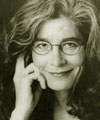 STEPHANIE
MILLS is an author, editor, lecturer, and sometime ecological
activist. She has concerned herself with the fate of the Earth and humanity
since 1969 when her commencement address at Mills College gained nationwide
attention for its dramatic call to personal engagement with the crises
of overpopulation and the degradation of the life of the land. Raised
in Phoenix, Arizona, educated and employed in the San Francisco Bay
Area from the mid-sixties to the mid-eighties, Mills is now a resident
of Northwest Lower Michigan. A longtime bioregionalist, Stephanie Mills
has written scores of articles and essays which have appeared in periodicals
ranging from The Britannica Book of the Yearto Glamour. She is the editor
of two books, In Praise of Nature (1990, Island Press) and Turning Away
From Technology (1997, Sierra Club Books). She is the author of Whatever
Happened to Ecology? (1989, Sierra Club Books) and In Service of the
Wild (1995, Beacon Press). In 1996 Stephanie Mills was named one of
the Utne Reader's Visionaries. She loves her home ground, but is frequently
called elsewhere to give talks about the importance of staying put. STEPHANIE
MILLS is an author, editor, lecturer, and sometime ecological
activist. She has concerned herself with the fate of the Earth and humanity
since 1969 when her commencement address at Mills College gained nationwide
attention for its dramatic call to personal engagement with the crises
of overpopulation and the degradation of the life of the land. Raised
in Phoenix, Arizona, educated and employed in the San Francisco Bay
Area from the mid-sixties to the mid-eighties, Mills is now a resident
of Northwest Lower Michigan. A longtime bioregionalist, Stephanie Mills
has written scores of articles and essays which have appeared in periodicals
ranging from The Britannica Book of the Yearto Glamour. She is the editor
of two books, In Praise of Nature (1990, Island Press) and Turning Away
From Technology (1997, Sierra Club Books). She is the author of Whatever
Happened to Ecology? (1989, Sierra Club Books) and In Service of the
Wild (1995, Beacon Press). In 1996 Stephanie Mills was named one of
the Utne Reader's Visionaries. She loves her home ground, but is frequently
called elsewhere to give talks about the importance of staying put.
ESSAY > Simplicity > http://www.oriononline.org/pages/om/02-2om/Simplicity.html
INTERVIEW > http://www.firstmonday.dk/issues/issue7_6/mills/
REVIEW > Epicurean Simplicity > http://resurgence.gn.apc.org/issues/gablik216.htm
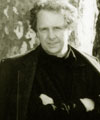 JOHN
HANSON MITCHELL is the author of Following the Sun, The Wildest
Place on Earth, Ceremonial Time, and Tresspassing and the editor of
Sanctuary, the journal of the Massachusetts Audubon Society. Winner
of the 1994 John Burroughs Essay Award, he received the 2000 New England
Booksellers' Award for his body of work. He lives in Littleton, Massachusetts. JOHN
HANSON MITCHELL is the author of Following the Sun, The Wildest
Place on Earth, Ceremonial Time, and Tresspassing and the editor of
Sanctuary, the journal of the Massachusetts Audubon Society. Winner
of the 1994 John Burroughs Essay Award, he received the 2000 New England
Booksellers' Award for his body of work. He lives in Littleton, Massachusetts.
TEXT > Walking Towards Walden > If there is such a thing as an
Americana pilgrimage, it must be to Concord. One brilliant Columbus
Day, John Mitchell made just such a pilgrimage, from an ancient burial
site, along the Great Road followed during the Revolution by the minutemen,
fifteen miles to Sleepy Hollow Cemetery and the home not only of Thoreau
but of Hawthorne, the Alcotts, and Emerson. Along the way of this delightful
narrative, natural and human history converge and we begin to understand
what is meant by ”a sense of place” and why this landscape
is our country’s sacred site.
TEXT > Ceremonial Time > ”Ceremonial time” is the
moment when past, present, and future can be perceived simultaneously.
Experienced only rarely, usually during ancient dances or rituals, this
escape from time is the gift of John Mitchell’s extraordinary
writing. In this, his most magical book, he traces the life on a single
spot in New England from the last ice age through years of Indians,
shamans, and bears, to the colonists, witches and farmers, and now the
encroaching ”parks.”
TEXT > Ceremonial Time >
http://www.perseusbooksgroup.com/counterpoint/book_detail.jsp?isbn=0201149370
TEXT > Walking Towards Walden >
http://www.perseusbooksgroup.com/counterpoint/book_detail.jsp?isbn=0201154870
REVIEW > Following the Sun: A Bicycle Pilgrimage from Andalusia
to the Hebrides
http://www.nimblespirit.com/html/following_the_sun_review.htm
REVIEW > Trespassing: An Inquiry into the Private Ownership of
Land
http://www.smithsonianmag.si.edu/smithsonian/issues99/feb99/bookreview_feb99.html
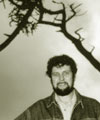 GARY
PAUL NABHAN (PhD) is cofounder of Native Seeds/SEARCH, Director
of Science at the Arizona- Sonora Desert Museum, and a member of the
Ethnobiology and Conservation Team. He has been awarded a MacArthur
Fellowship, a Pew Scholarship for conservation research, and John Burroughs
Medal for nature writing. He lives in Arizona. GARY
PAUL NABHAN (PhD) is cofounder of Native Seeds/SEARCH, Director
of Science at the Arizona- Sonora Desert Museum, and a member of the
Ethnobiology and Conservation Team. He has been awarded a MacArthur
Fellowship, a Pew Scholarship for conservation research, and John Burroughs
Medal for nature writing. He lives in Arizona.
HOMEPAGE > http://www.nau.edu/~envsci/faculty/gary_nabhan.htm
HOMEPAGE > http://www.environment.nau.edu/aboutcse/Gary_Paul_Nabhan.htm
ESSAY > Listening to the Other > Can a sense of place help
the peace-making process?
http://www.oriononline.org/pages/om/04-3om/Nabhan.html
ESSAY > Mother Mountains > http://weeklywire.com/ww/11-17-97/tw_feat.html
ESSAY > Tree of Life > http://weeklywire.com/ww/06-12-00/tw_feat.html
ESSAY > The Other Migrant Workers >
http://www.grist.org/news/maindish/1999/05/24/nabhan-bee/
INTERVIEW > http://www.npr.org/programs/talkingplants/features/2001/011109.nabhan.html
TEXT > Coming Home to Eat > http://www.wwnorton.com/catalog/fall01/002017.htm
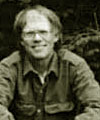 RICHARD
NELSON was born and raised in Madison, Wisconsin. He attended
the University of Wisconsin-Madison for both his undergraduate and graduate
studies. After several years as a biology major, he became disillusioned
with the analytical, quantitative, technology-bound approach of western
science and shifted to anthropology and the study of nature through
non-western cultural traditions. RICHARD
NELSON was born and raised in Madison, Wisconsin. He attended
the University of Wisconsin-Madison for both his undergraduate and graduate
studies. After several years as a biology major, he became disillusioned
with the analytical, quantitative, technology-bound approach of western
science and shifted to anthropology and the study of nature through
non-western cultural traditions.
Nelson has spent the past twenty-five years working with Alaskan native
peoples and writing about their relationships to nature. He has also
participated in several projects on subsistence and traditional land
use in Native Alaskan communities. He has written for Antaeus, Orion,
LIFE, Outside, and the Los Angeles Times. Other works include Shadow
of the Hunter, Hunters of the Northern Ice, and Make Prayers to the
Raven, which was developed into an award-winning PBS series about the
natural and spiritual worlds of the Koyukon Indians. Nelson has held
faculty appointments at the University of Hawaii, Memorial University
of Newfoundland, University of California-Santa Barbara, University
of California-Santa Cruz, and the University of Alaska-Fairbanks. Since
1982 Nelson has worked primarily as an independent researcher and writer.
He currently makes his home in Sitka, Alaska with his wife and stepson.
AWARD > http://www.wla.lib.wi.us/lac/banta/1990banta.htm
ESSAY > http://www.pbs.org/harriman/explog/lectures/nelson.html
ESSAY > Forest Home: Taking a Stand for Conservation and Community
http://arts.envirolink.org/arts_and_activism/RichardNelson.html
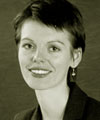 DEBORAH PARSONS (PhD) has a BA in English Literature & Philosophy, and MA in Literature and the Visual Arts 1840-1940, both from the University of Reading. She studied for her doctorate at Birkbeck College, University of London, completing her thesis on women writers and the city in late nineteenth and early twentieth-century London and Paris. She is the author of Streetwalking the Metropolis: Women, the City, and Modernity. DEBORAH PARSONS (PhD) has a BA in English Literature & Philosophy, and MA in Literature and the Visual Arts 1840-1940, both from the University of Reading. She studied for her doctorate at Birkbeck College, University of London, completing her thesis on women writers and the city in late nineteenth and early twentieth-century London and Paris. She is the author of Streetwalking the Metropolis: Women, the City, and Modernity.
Deborah teaches modules and supervises students in nineteenth and twentieth-century literature. She is the convenor of the Level 2 C period module ‘Literature and Change 1780-Present’, and part of the Independent Study team, convening the Dissertation/Research Project strand at Level 3. She is Chair of Postgraduate Programmes in the Department of English.
Deborah’s principal research interests are in Anglo-American modernism (particularly the writings of Djuna Barnes, Dorothy Richardson and Virginia Woolf), and in urban representation and culture from the nineteenth century to the present day, and she has published widely in these areas. With Dr Andrzej Gasiorek she organised the 2003 Modernist Studies Association conference, hosted by the University of Birmingham, and is developing the electronic journal in modernist studies, Modernist Cultures.
HOMEPAGE > http://www.english.bham.ac.uk/who/parsons.htm
INTERVIEW > Sexuality and the City >
http://www.chicagopublicradio.org/audio_library/od_ranov04.asp#22
TEXT > Streetwalking the Metropolis: Women, the City, and Modernity >
http://www.us.oup.com/us/catalog/general/subject/LiteratureEnglish/BritishLiterature/20thC/
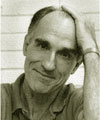 SCOTT
RUSSELL SANDERS - Sanders' many publications include novels
(THE INVISIBLE COMPANY, BAD MAN BALLAD, TERRARIUM, THE ENGINEER OF BEASTS),
collections of short stories (WILDERNESS PLOTS, FETCHING THE DEAD),
works of creative nonfiction (WRITING FROM THE CENTER, STAYING PUT,
THE PARADISE OF BOMBS, SECRETS OF THE UNIVERSE, IN LIMESTONE COUNTRY),
as well as books for children (THE FLOATING HOUSE, HERE COMES THE MYSTERY
MAN, WARM AS WOOL, AURORA MEANS DAWN, HEAR THE WIND BLOW). His writing
appears regularly in the Georgia Review, Orion, Audubon, and numerous
anthologies. He has been awarded fellowships from the Guggenheim Foundation,
the National Endowment for the Arts, and the Lilly Endowment. Sanders'
work has also received the Associated Writing Programs Award in Creative
Nonfiction, the Kenyon Review Award for Literary Excellence, the Great
Lakes Book Award, and the Ohioana Book Award. For his work in nonfiction,
Sanders received a Lannan Literary Award in 1995. He has received honorary
degrees from Otterbein College, Berea College, and Unity College, and
has been honored with Indiana University's highest teaching award, the
Frederick Bachman Lieber Award for Distinguished Teaching, as well as
the rank of Distinguished Professor. SCOTT
RUSSELL SANDERS - Sanders' many publications include novels
(THE INVISIBLE COMPANY, BAD MAN BALLAD, TERRARIUM, THE ENGINEER OF BEASTS),
collections of short stories (WILDERNESS PLOTS, FETCHING THE DEAD),
works of creative nonfiction (WRITING FROM THE CENTER, STAYING PUT,
THE PARADISE OF BOMBS, SECRETS OF THE UNIVERSE, IN LIMESTONE COUNTRY),
as well as books for children (THE FLOATING HOUSE, HERE COMES THE MYSTERY
MAN, WARM AS WOOL, AURORA MEANS DAWN, HEAR THE WIND BLOW). His writing
appears regularly in the Georgia Review, Orion, Audubon, and numerous
anthologies. He has been awarded fellowships from the Guggenheim Foundation,
the National Endowment for the Arts, and the Lilly Endowment. Sanders'
work has also received the Associated Writing Programs Award in Creative
Nonfiction, the Kenyon Review Award for Literary Excellence, the Great
Lakes Book Award, and the Ohioana Book Award. For his work in nonfiction,
Sanders received a Lannan Literary Award in 1995. He has received honorary
degrees from Otterbein College, Berea College, and Unity College, and
has been honored with Indiana University's highest teaching award, the
Frederick Bachman Lieber Award for Distinguished Teaching, as well as
the rank of Distinguished Professor.
Sanders has recently been the subject of a video from the Lannan Foundation
and of interviews in The Fourth Genre, The Kenyon Review, The Sun, and
The Chronicle of Higher Education. For an essay which appeared in Audubon,
where he is a contributing editor, he won the John Burroughs Natural
History Essay Award for 2000. His essay "The Force of Spirit"
appeared in THE BEST AMERICAN ESSAYS 2000, the fourth time his work
has appeared in this annual collection of outstanding nonfiction. Sanders'
most recent books are HUNTING FOR HOPE (Beacon, 1998), THE COUNTRY OF
LANGUAGE (Milkweed Editions, 1999) and THE FORCE OF SPIRIT (Beacon,
2000).
HOMEPAGE > http://www.indiana.edu/~mfawrite/sanders.html
ESSAY > Limberlost and Found > http://magazine.audubon.org/features0105/limberlost.html
ESSAY > Stillness > http://www.orionsociety.org/pages/om/01-2om/01-2om_still.html
ESSAY > Beauty > http://arts.envirolink.org/literary_arts/ScottRSanders.html
ARTICLE > http://www.bsu.edu/ourlandourlit/Literature/Authors/sanderssr.html
INTERVIEW > http://www.kenyonreview.org/Magazine/interviews/pz-sanders.asp
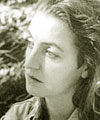 REBECCA
SOLNIT is an essayist, critic and activist based in San Francisco.
Her books include Secret Exhibition: Six California Artists of the Cold
War Era (City Lights, 1990), Savage Dreams: a journey into the hidden
wars of the American West (Sierra Club Books, 1994/Vintage Books, 1995),
and A Book of Migrations: Some Passages in Ireland (Verso/1997). She
is a contributing editor to Art issues and Creative Camera, a columnist
for Grand Street, a regular contributor the the environmental magazine
Sierra, the author of essays in numerous museum catalogues and books,
such as the Whitney Museum's Beat Culture and the New America and the
Denver Art Museum's Visions of America: Landscape as Metaphor in the
Late Twentieth Century, as well as a political activist involved in
nuclear, environmental and human rights issues. REBECCA
SOLNIT is an essayist, critic and activist based in San Francisco.
Her books include Secret Exhibition: Six California Artists of the Cold
War Era (City Lights, 1990), Savage Dreams: a journey into the hidden
wars of the American West (Sierra Club Books, 1994/Vintage Books, 1995),
and A Book of Migrations: Some Passages in Ireland (Verso/1997). She
is a contributing editor to Art issues and Creative Camera, a columnist
for Grand Street, a regular contributor the the environmental magazine
Sierra, the author of essays in numerous museum catalogues and books,
such as the Whitney Museum's Beat Culture and the New America and the
Denver Art Museum's Visions of America: Landscape as Metaphor in the
Late Twentieth Century, as well as a political activist involved in
nuclear, environmental and human rights issues.
REVIEW > Wanderlust: A History of Walking
http://archive.salon.com/books/review/2000/04/27/solnit/
ESSAY > Orion Magazine > "Acts of Hope: Challenging Empire
on the World Stage"
http://www.oriononline.org/pages/oo/sidebars/Patriotism/index_Solnit.html
ESSAY> Orion Magazine > "The White Queen's Vision"
http://www.oriononline.org/pages/om/04-2om/Solnit.html
ESSAY> AlterNet
http://www.alternet.org/authors/5857/
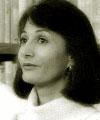 CHARLENE
SPRETNAK received an M.A. (1981) in English from the University
of California, Berkeley. Her most recent book is The Resurgence of the
Real: Body, Nature, and Place in a Postmodern World (1997). She is also
the author of States of Grace: The Recovery of Meaning in the Postmodern
Age (1991), The Spiritual Dimension of Green Politics (1986), and editor
of The Politics of Women's Spirituality (1982). Her pioneering work
has contributed to the framing of the women's spirituality, ecofeminist,
and Green politics movements. Charlene lectures widely in the United
States and Europe. CHARLENE
SPRETNAK received an M.A. (1981) in English from the University
of California, Berkeley. Her most recent book is The Resurgence of the
Real: Body, Nature, and Place in a Postmodern World (1997). She is also
the author of States of Grace: The Recovery of Meaning in the Postmodern
Age (1991), The Spiritual Dimension of Green Politics (1986), and editor
of The Politics of Women's Spirituality (1982). Her pioneering work
has contributed to the framing of the women's spirituality, ecofeminist,
and Green politics movements. Charlene lectures widely in the United
States and Europe.
HOMEPAGE > http://www.ciis.edu/faculty/spretnak.html
ESSAY > The Green Alternative >
http://www.context.org/ICLIB/IC07/Spretnak.htm
ESSAY > Modernity Rules, OK? > http://resurgence.gn.apc.org/186/spretnak186.htm
INTERVIEW > http://www.montara.com/real/wildduck.html
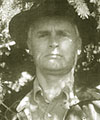 JOHN
STILGOE - Stilgoe is Robert & Lois Orchard Professor in
the History of Landscape at Harvard University. His many books include
Common Landscape of America, 1580 to 1845 (Yale, 1982), The Metropolitan
Corridor: Railroads and the American Scene (Yale, 1983), Borderland:
Origins of the American Suburb, 1820-1939 (Yale, 1988), Alongshore (Yale,
1994), and Outside Lies Magic: Regaining History and Awareness in Everyday
Places (Walker, 1998). JOHN
STILGOE - Stilgoe is Robert & Lois Orchard Professor in
the History of Landscape at Harvard University. His many books include
Common Landscape of America, 1580 to 1845 (Yale, 1982), The Metropolitan
Corridor: Railroads and the American Scene (Yale, 1983), Borderland:
Origins of the American Suburb, 1820-1939 (Yale, 1988), Alongshore (Yale,
1994), and Outside Lies Magic: Regaining History and Awareness in Everyday
Places (Walker, 1998).
Outside Lies Magic: Discovering History and Inspiration in Ordinary
Places is my latest book, published by Walker & Company of New York.
It examines the rewards of walking and bicycling in ordinary landscapes.
HOMEPAGE > http://www.people.fas.harvard.edu/~stilgoe/
HOMEPAGE > http://www.ves.fas.harvard.edu/faculty/stilgoe.html
ARTICLE > 60 Minutes > "The Eyes Have It"
http://www.cbsnews.com/stories/2003/12/31/60minutes/main590907.shtml
ARTICLE > Smithsonian Magazine > "Reading the Messages
in Everyday Things"
http://www.smithsonianmag.si.edu/smithsonian/issues00/apr00/stilgoe.html
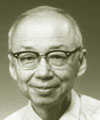 YI-FU
TUAN - Tuan, J. K. Wright and Vilas Professor emeritus of geography
at the University of Wisconsin–Madison, is the recipient of numerous
honors and the author of fifteen books including Topophilia; Space and
Place; Cosmos and Hearth; Passing Strange and Wonderful; Dominance and
Affection; and Escapism. His books have appeared in at least 16 translated
editions. YI-FU
TUAN - Tuan, J. K. Wright and Vilas Professor emeritus of geography
at the University of Wisconsin–Madison, is the recipient of numerous
honors and the author of fifteen books including Topophilia; Space and
Place; Cosmos and Hearth; Passing Strange and Wonderful; Dominance and
Affection; and Escapism. His books have appeared in at least 16 translated
editions.
When asked "Why are you a geographer?" Yi-Fu Tuan's eloquently
simple response was, "I have always wanted to know what it is like
to live on earth." These words provide a key to the man and his
writing; he is not only geographer, but also philosopher and humanist,
an unabashed Renaissance man in an age of rigid specialists, as readable
an essayist as he is intrepid a scholar.
Born in Tientsin, China and educated at Oxford, Professor Tuan came
to the United States in 1951, where he received a Ph.D. at the University
of California, Berkeley in 1957 and went on to teach at, among others,
the Universities of Indiana, New Mexico, Toronto, and Minnesota before
coming in 1984 to Wisconsin. In 1987 he received the Cullum Geographical
Medal of the American Geographical Society. At present he is J.K. Wright
and Vilas Research Professor in the Geography Department at the University
of Wisconsin-Madison.
Tuan's numerous writings reflect his view of geography in its broadest
sense, as the interaction of human being and environment and how we
fashion a world out of everything around us: natural and man-made places
such as countryside, garden, or city; our fellow animal and human beings;
even food, music, study, thought. Early works such as Topophila and
Space and Place establish the foundation that leads to his later focus
on specific aspects of human life such as the nature of fear in our
own and other societies in Landscapes of Fear, or the need of people
to control and alter for often selfish purposes plants, animals, and
fellow humans such as servants, children, or wives, in Dominance and
Affection. In recent works such as The Good Life and Passing Strange
and Wonderful, both of which received WLA Outstanding Achievement Recognition,
he considers the meaning of ideas like comfort, happiness and beauty
in modern and historical times and in various groups and countries.
The array of sources he draws on is consistently wide-ranging and eclectic.
An original thinker whose intellectual curiosity knows no bounds, Yi-Fu
Tuan opens surprising new windows on our everyday world and helps us
ponder with amazement its vast and unending diversity.
ARTICLE > The Chronicle of Higher Education > "Lost in
Place: Yi-Fu Tuan may be the
most influential scholar you've never heard of..."
http://chronicle.com/free/v47/i27/27a01401.htm
ESSAY > American Council of Learned Societies > "A Life
of Learning"
http://www.acls.org/op42tuan.htm
TEXT > "Who Am I? An Autobiography of Emotion, Mind, and
Spirit"
http://www.wisc.edu/wisconsinpress/books/3253.htm
... A PROTRACTED SYMPOSIUM ...
WALKING AS KNOWING AS MAKING // A PERIPATETIC INVESTIGATION OF PLACE
SPRING 2005 // UNIVERSITY OF ILLINOIS @ URBANA-CHAMPAIGN HOME & INTRODUCTION // SCHEDULE & PARTICIPANTS // BIBLIOGRAPHY & LINKS
WKM READING GROUP // ONLINE EXCHANGE // OTHER WALKERS |
